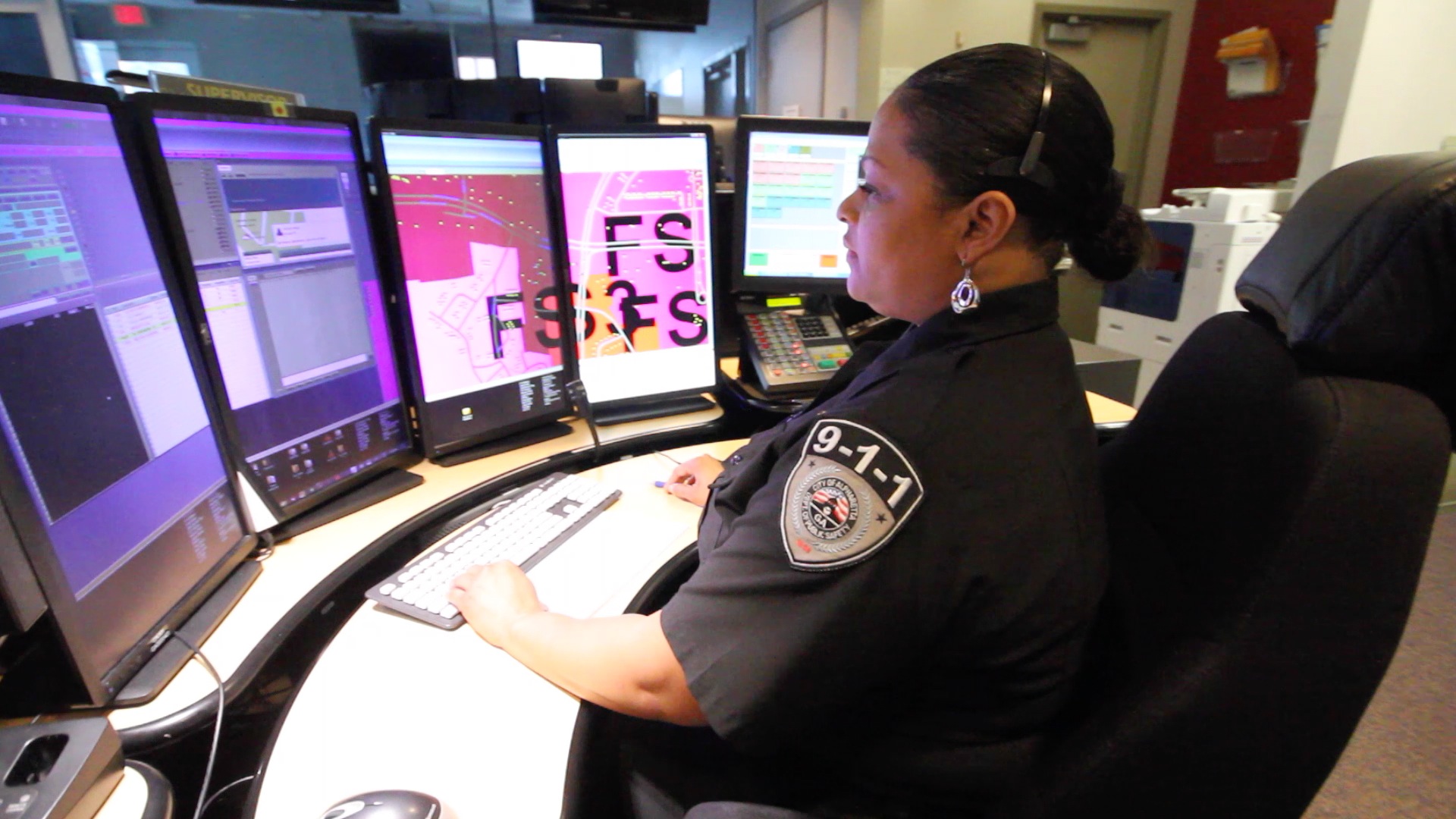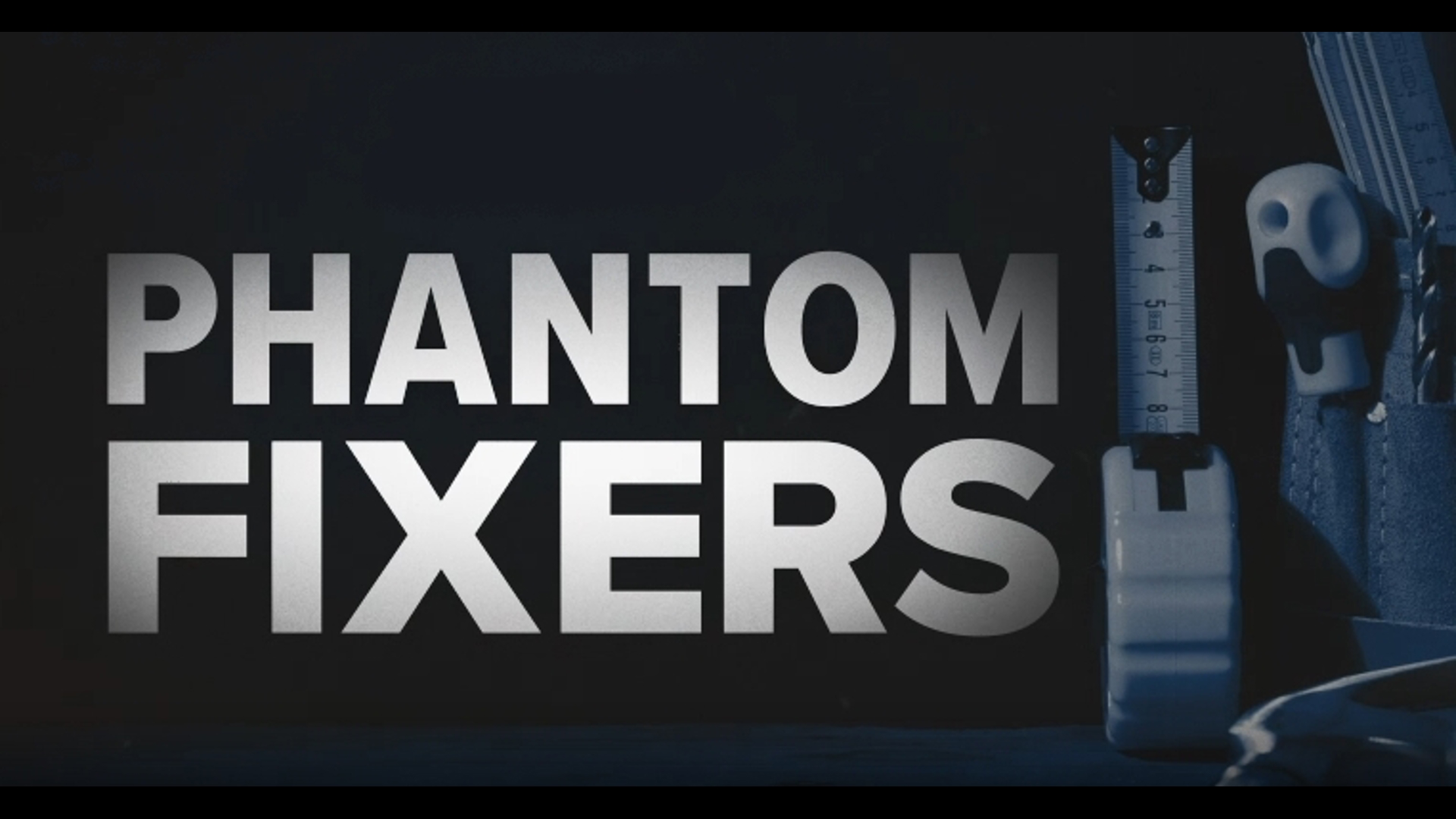MINNEAPOLIS - Eighty percent of calls to 911 in Minnesota, now come from cell phones. Phones that can tell us exactly where we are. But a KARE 11 News/USA Today investigation reveals that when you call from a cell phone, emergency responders don't always know where to send help - and that can mean the difference between life and death.
When Shanell Anderson veered off the road into a lake, she dialed 911 on her cell phone. "Where are you?" the 911 operator asked.
As
In the agonizing final seconds of the call, Anderson's words are muffled by the sounds of water. The dispatcher asks for the address again, then utters, "I lost her."
It happened in suburban Atlanta, Georgia, but the incident highlights a fatal flaw in 911 systems nationwide.
Too often, when you call from a mobile phone – even a phone with GPS technology – 911 centers here in Minnesota don't know where you are.
The problem was apparent even at the Ramsey County 911 call center in St. Paul.
"A lot of them think we know where they are," a 911 operator said. "Unless you're calling from a landline, we don't know where you are."
Statistics
"It happens multiple times a day," the operator said. To demonstrate the problem, officials invited the KARE 11 team to make a test call to 911.
"It's pinging Dayton's Bluff library," the operator said, as her computer screen showed the location. The cell phone being used in the 911 call center was showing up in a location nearly a mile away.
"Yes, it is concerning," says Jackie Mines, who heads Minnesota's 911 program at the state Department of Public Safety.
Mines acknowledges the problem but stresses that the longer a caller stays on the line, the better the chances that the equipment can zero in on a cell phone's location.
"It really depends on the carrier's capability to collect that exact location," she explained.
Of course, if you already know your location – and can tell the 911 operator – it shouldn't matter. But what if you can't?
Traditional telephone lines let 911 pinpoint a caller's location. That's why Mines told us some people should think twice before they ditch their old fashioned phone.
"If you have a medical condition or small children in your home," Mines said, "you may want to consider hanging
Your chance of 911 getting a quick fix on location ranges wildly from as low as 10 percent to as high as 95 percent, according to hundreds of pages of local, state and federal documents obtained and reviewed by USA TODAY and more than 40 Gannett newspapers and television stations across the country.
The review of 911 call records, including data for seven large states and many additional cities, shows:
- In California, more than half of
cellphone calls didn't transmit location to 911 over a two-year period from 2011 to 2013, and it's getting worse. Last year, about 12.4 million calls or 63 percent of California'scellphone calls to 911 didn't sharelocation . Among the worst places: Silicon Valley. In December 2012, precise location was sharedin just 10 percent to 37 percent of the area's emergency calls, depending on the wireless carrier. - In Colorado, 58 percent of the 5.8 million cellphone-to-911 calls last year transmitted coordinates, according to data obtained from the Colorado 911 Resource Center.
- In Texas, two-thirds of
cellphone calls in a sample of calls from major cities – including Austin and Houston – reached 911 without an instant fix onlocation from 2010 through 2013. - In the Virginia suburbs outside Washington, Fairfax County authorities said 25 percent of
cellphone calls included precise location data in 2014, and Loudoun County said 29 percent of mobile calls did over the last six months of 2014.
Those figures are typical of what's documented by 911 officials in hundreds of other communities, according to local, state and federal government records. There is no mandate or standard for collection or study of 911 location data. The FCC doesn't collect data and neither do some 911 centers. That makes it difficult to look at consistent statistics from
Click on the map to find stories from across the country about similar 911 issues across the U.S.
In their reports and letters to the FCC, local police and fire chiefs, 911 operators, emergency room doctors and others raised concerns about the problem worsening as more calls shift to the cellphone network, which now accounts for at least 70 percent of all 911 calls.
"It is now easier than ever for victims to reach 911, but harder than ever for responders to reach them," said David Shoar, the sheriff in St. John's County, Fla., writing to the FCC in November as president of the Florida Sheriffs Association.
The FCC and the four largest cellphone carriers say they're doing their best to address the problem. Earlier this month, they worked together on a new federal rule that requires carriers to steadily increase the percentage of
The rules, crafted in part by the carriers, call for delivery of location data for 40 percent of cellphone calls by 2017 and 80 percent by 2021. In the months spent drafting the rule, the
David Simpson, a retired rear admiral who is now chief of the FCC's Public Safety and Homeland Security Bureau, acknowledged the current system is not capable of solving the problem sooner. His agency's mission instead was "to ensure there was a backstop of enforceable regulations that held them accountable for improving the indoor location accuracy challenge."
The four largest cellphone carriers declined to answer reporters' questions. Their trade organization, CTIA The Wireless Association, said that, until recently, the
Scott Bergmann, the group's vice president for regulatory affairs, said the cellphone companies "stepped up" last year to begin an aggressive effort to improve the system using new technologies, including Wi-Fi and Bluetooth, to increase the availability and the accuracy of location data from cellphone calls.
"That's huge," the FCC's Simpson said. "We have not had that obligation on the carriers before."
Bergmann also said, however, that "the FCC's timeframes are aggressive." But he said the companies "are hard at work with our public safety partners to improve wireless 911 calls as quickly as possible."
The delay in finding Shanell Anderson resulted from a combination of lingering problems involving cellphone calls to 911.
First, as her car sank in Cherokee County, Anderson's phone connected through a tower in nearby Fulton County. She was talking to a 911 dispatcher in the wrong town. The call center's computer maps didn't show the streets Anderson kept repeating. It took minutes, and a call to another county, for emergency teams to realize what was happening, delaying firefighters' response.
But, most important, 911 never received location data from her cellphone before the line went dead.
"There are times when it doesn't come up at all," said Carl Hall, chief of technology at Alpharetta's Public Safety Department. "Every day we receive calls where we get a (cell) tower address and that's it."
When rescuers did arrive, they spotted the SUV's still-burning headlights under water. A firefighter dived in and fished Anderson from the car. Medics restarted her heart, but comatose, she never recovered.
"If the phone had automatically routed to the correct jurisdiction, this very well may have had a different outcome," Hall said.
Technical explanations are not good enough for Jacquene Curlee, Shanell's mother, who said it's "insane" that 911 can't locate someone considering the capabilities of today's smartphones.
"Why is it more important for a 99-cent app or Facebook to know where we are than the 911 operator who answers the call?" Curlee asked. "When you have GPS, when you have apps that have locator services, you're telling me 911 doesn't have the capability to locate someone?"
No, it doesn't, at least not for every cellphone call. Across the country, there are similarly dire cases.
In 2008, Denise Amber Lee was kidnapped in Sarasota County, Fla., and dialed 911 while on the floor of her assailant's car, but the dispatcher could not get a location for her cellphone. Lee was raped and murdered before she could be found.
In 2010, Carol Ouellet called 911 in Cortez, Colo., as her lungs slowly filled with blood. For two minutes, the dispatcher tried to get useful information from her, but the woman could only utter a word or two. The cellphone call didn't include location data. It took the operator two hours to find the woman. By the time police got to her house, Ouellet was dead.
The 911 system was designed for landline telephones, transmitting your call and your location instantly over a hard-wired connection.
Today's cellphone system does not automatically send location data when you dial 911. The phones turn on location capabilities automatically when you dial 911. After the call comes in, the dispatcher's computer transmits a digital request to the cellphone network seeking the phone's location. The data exchange can take seconds or even minutes. Sometimes, it doesn't return a location at all.
The most high-tech 911 centers automate the process, digitally requesting the location every few seconds. If the system can't locate the device, cellphone carriers' systems will use nearby towers to estimate. These methods sometimes do net location information later, although public records show some call centers see major gains as calls go on and others see only marginal improvement. Often, 911 calls end before that digital back-and-forth yields a specific location for emergency responders.
In short, your phone's apps are connected directly to the GPS unit inside the phone. The 911 system relies on getting that information through a relay process, although the FCC's Simpson said the agency wants to work with companies like Google and Uber who've mastered location services to build a 911 app. The more immediate focus is to make continuous improvements to existing systems to "close the gap between Americans' expectations of what 911 will do for them and what it can really do."
The quest to make cellphone calls to 911 more useful to emergency crews began in the mid-1990s. The FCC set a deadline: Two-thirds of cellphone calls would transmit location to 911 by 2002. That rule was written at a time when cellphone calls were mostly made outdoors and the industry says it can meet the goal when applied only to outdoor calls. The deadline got pushed back several times since then.
The proliferation of mobile phones means a problem impacting a tiny share of calls fast became a problem for most calls. In many homes these days, a cellphone is the only phone. Exponentially more calls are being made indoors, creating more interference for networks trying to get a location fix.
Even when 911 does receive a location, it's sometimes wrong. Test calls by Gannett journalists working with 911 centers in the Denver, Washington, Minneapolis and Charlotte areas resulted in calls without location data or with coordinates that were off by hundreds of feet.
Green Bay Police Chief Thomas Molitor wrote FCC Secretary Marlene Dortsch in December lobbying for fast movement on the issue, saying dispatchers and callers face enough stress during a 911 call, but that public safety teams can't provide a solution without a location, which they have with less frequency.
"An estimated 10,000 people each year would be saved with accurate location standards from indoor cell phone calls," Molitor wrote, citing an FCC estimate for the number of lives that could be saved by a one-minute reduction in emergency response times. "Whatever hang-ups they have cannot be more important than 10,000 lives."
Contributing: Chris Vanderveen of KUSA in Denver, Russ Ptacek and Erin Van der Bellen of WUSA in Washington, Steve Eckert of KARE in Minneapolis, Phillip Kish of WXIA in Atlanta, Mike Deeson of WTSP in Tampa, Michelle Boudin of WCNC in Charlotte.


